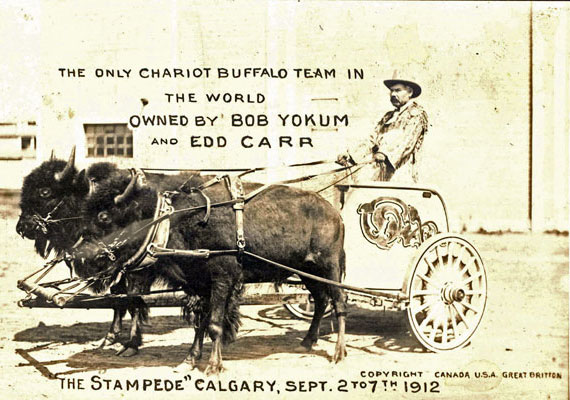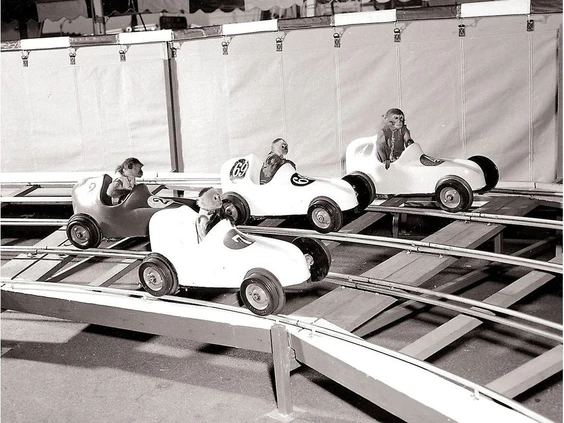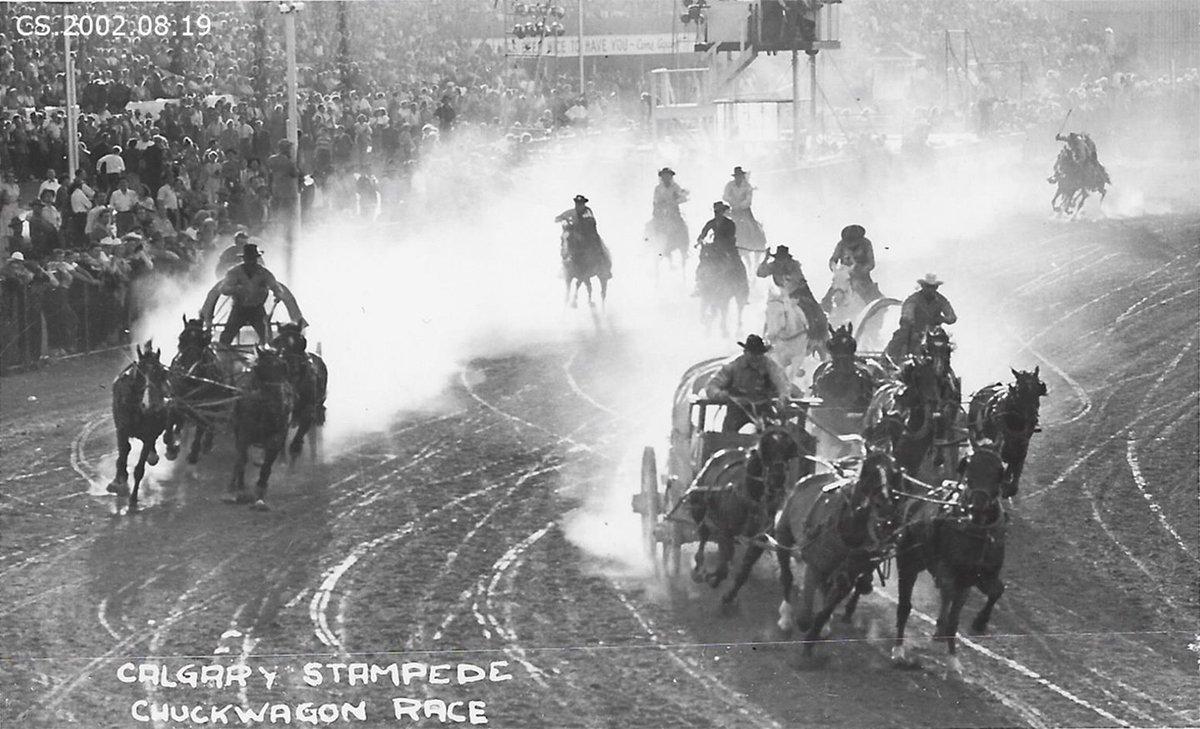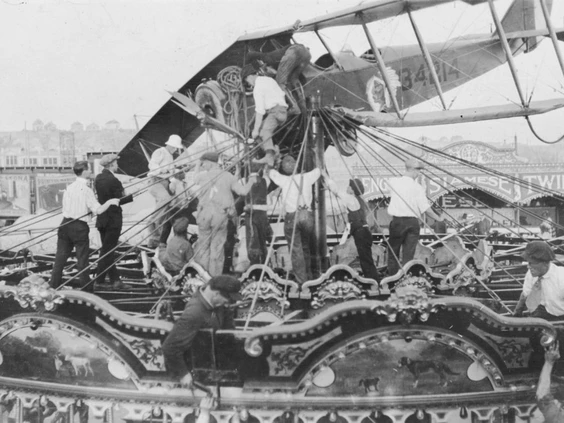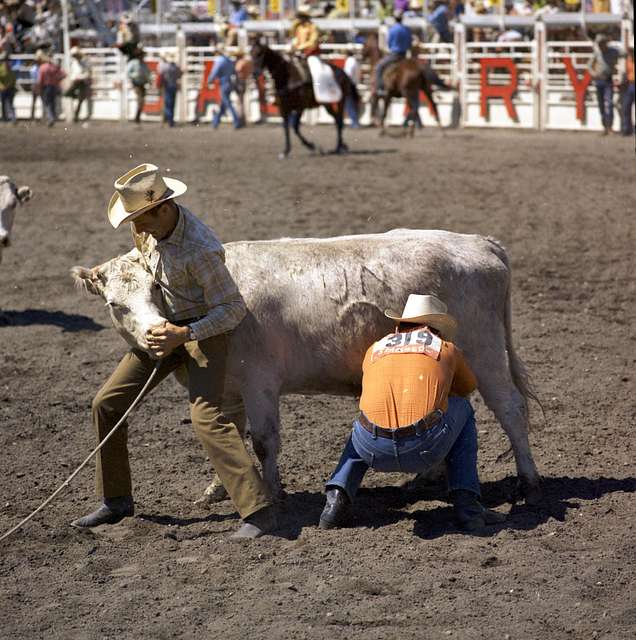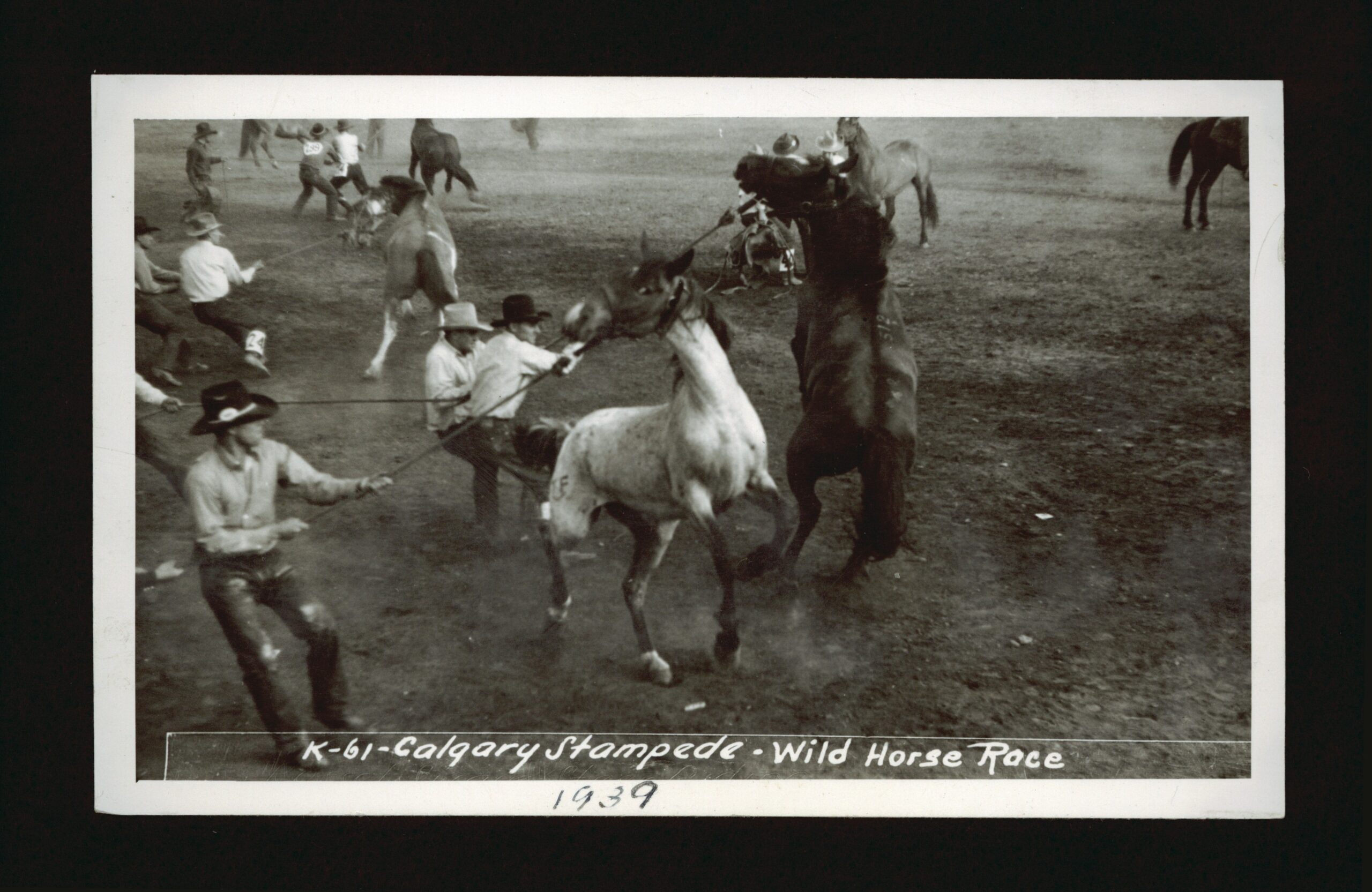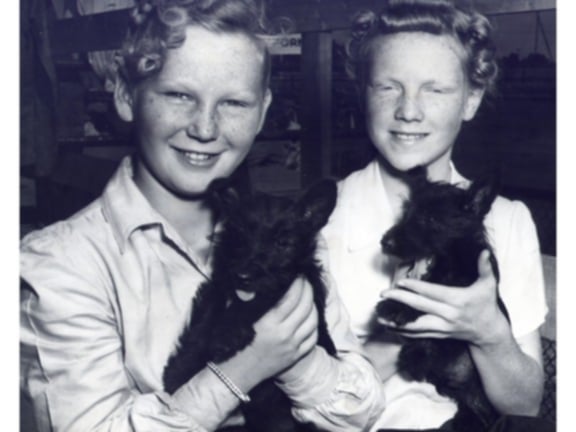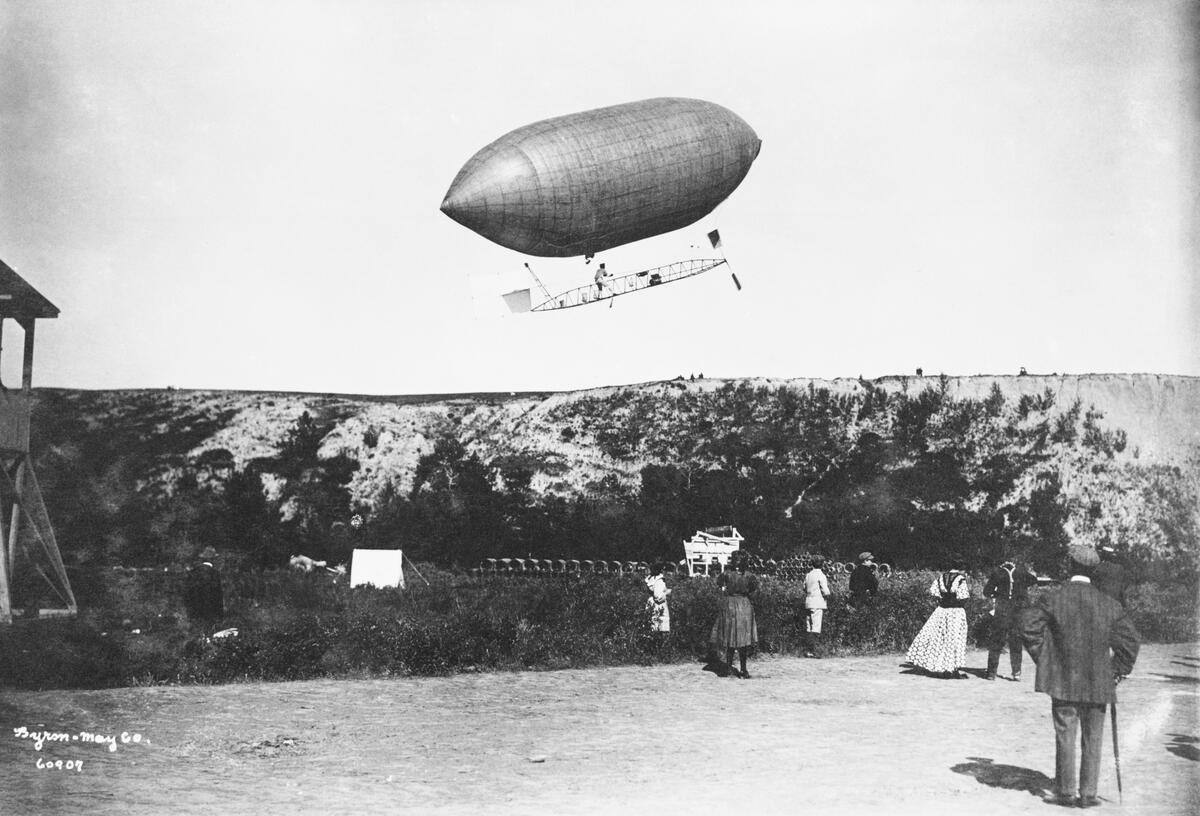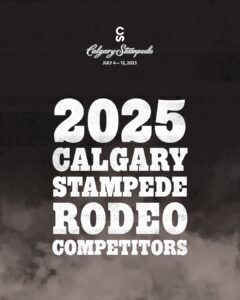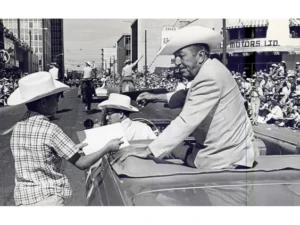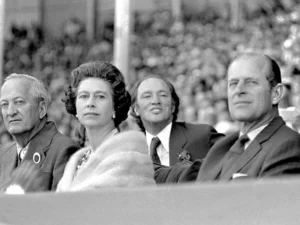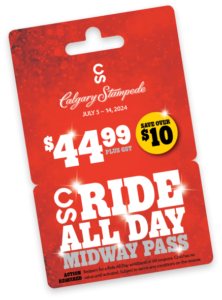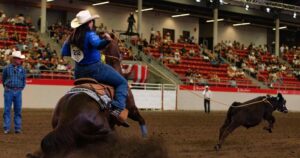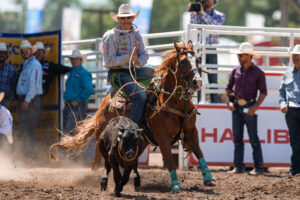9 Insane Moments in Calgary Stampede History That Will Never Happen Again!
Written by Visit Stampede / All images credit: Calgary Stampede
The Calgary Stampede has seen its fair share of thrills, spills, and downright unbelievable moments over the years. From fiery airship crashes to monkeys racing tiny cars, some of the wildest events ever witnessed at Stampede seem almost too crazy to be true. But they did happen—and they’ll never happen again. Whether it was sheer chaos, questionable safety (looking at you, Buffalo Chariot), or just an evolving sense of rodeo tradition, these jaw-dropping moments are now legendary. So buckle up—because these nine stories prove that Stampede history is just as wild as the rodeo itself!
The Buffalo Chariot – 1912
When Bob Yokum and Edd Carr arrived at the inaugural Calgary Stampede in 1912, they brought with them what might be one of the most reckless contraptions in history—a chariot pulled by two full-grown bison. Considering that bison can reach speeds of 65-70 km/h and are notoriously aggressive (causing three times as many injuries as bears in Yellowstone National Park), this was a disaster waiting to happen. Thankfully, Stampede founder Guy Weadick had the good sense not to introduce Buffalo Chariot racing as an official event—because if he had, the stadium (and possibly the entire city) might not have survived.
Monkey Motor Madness – 1926
Johnny J. Jones, known for his outrageous midway attractions, took things up a notch in 1926 when he introduced monkeys to the Stampede midway. But in true Johnny J. Jones Exposition fashion, simply having monkeys wasn’t enough—he had to put them behind the wheel of tiny race cars. For 15 cents, spectators could witness the sheer chaos of primates speeding around in miniature vehicles. Because nothing says wholesome family entertainment quite like high-speed, monkey-driven mayhem!
1st Chuckwagon on Fire Wins! – 1923
Well, not literally—but close. When the Calgary Stampede merged with the Exhibition in 1923, Guy Weadick needed a marquee event. His solution? Chuckwagon racing—an event that would become the Stampede’s most beloved and thrilling competition for the next 100 years. But the original rules had, to put it mildly, some safety concerns. After completing a figure-eight pattern, drivers had to park their wagons and light a fire in a stove bolted to the back. The first to produce smoke won. Strangely enough, no one thought to ask the horses—who were still hitched to the wooden wagons—how they felt about this fiery rule. Unsurprisingly, the rules were overhauled within a few years.
Horse Diving – 1919
Picture this: a woman and her horse leaping off a 50-foot platform into just 10 feet of water. Spectators at the 1919 Victory Stampede didn’t have to imagine it—they watched in awe as Sonora Carver and her horse plunged straight into the Bow River. Despite Sonora performing this daring act for decades, it was thankfully not a reoccuring act at Stampede. Even after losing her sight in a 1931 accident, she refused to let it stop her. Sonora continued diving horses off a platform until 1942. She lived a remarkable life, passing away in 2003 at the age of 99—forever remembered for her fearless spirit and breathtaking stunts.
That Time a Plane “Landed” on the Carousel – 1919
The 1919 Victory Stampede was a grand celebration marking the end of World War I, and among the honored heroes was Canada’s top flying ace, Freddie McCall. Performing daring stunts over the Stampede Grounds in his Curtiss JN-4 “Jenny” biplane, McCall took an unexpected turn when he brought the Exhibition Manager’s two sons up for a flight—only for his engine to suddenly fail. With an auto race tearing around the track and a bustling midway below, he had no good options for an emergency landing. So, he improvised. In a move straight out of an action film, McCall managed to impale his plane on the pole atop the carousel. Miraculously, no one was injured—except for poor Jenny, who was far beyond repair.
Wild Cow Milking – Retired in 2005
For years, one of the most chaotic events at the Calgary Stampede involved teams of three men—one on horseback—competing to see who could milk a wild cow first. While still a staple at some rodeos, the Stampede officially retired this mayhem-filled spectacle after 2005. The rules were simple: a cowboy would rope a wild cow, then his two teammates would rush in to milk it. The catch? The cow had to be unhooked from the saddle horn first, meaning it was free to bolt—often dragging the would-be milkers behind it. With unpredictability (and a fair share of bruises), it was one of the craziest rodeo events.
Wild Horse Races – Retired in 2005… Sort of…
Few events lived up to the word wild quite like the Wild Horse Race. This chaotic spectacle began with an untamed horse bursting out of the chute straight at three cowboys holding onto a rope—whether they stayed on their feet was another story. To win, the team had to saddle the bucking bronco (who wasn’t partial to being saddled) and ride it across the finish line. More often than not, the 1,000-pound stallion had other plans—dragging one, two, or all three cowboys in whichever direction it pleased. The event was retired in 2005, but Stampede-goers can still enjoy a similar kind of mayhem—except now, it’s children getting dragged by ponies in the Wild Pony Race daily at the rodeo.
Win a Pony and Take It Home to Your Suburban Home – 1950s
Imagine waking up in your quiet suburban home, completely unaware that by nightfall, you’d either be figuring out how to house a pony in your backyard—or ripping your child’s heart out. In the late 1940s and 1950s, the Calgary Stampede took carnival prizes to the next level by giving away actual animals. Some lucky winners went home with house-friendly puppies, but others walked away with something much larger. Yes, a real, full-sized pony. So, what would you do if your child came home from the Stampede this summer with the ultimate surprise?
Great Balls of Fire – 1908
In 1908, aviation was the wonder of the era, and the Dominion Exhibition wanted in on the excitement. They enlisted Charles J. Strobel of Toledo, Ohio, to bring his famous traveling airship to dazzle the crowds. Piloted by Jack Dallas, the hydrogen-filled airship successfully completed five breathtaking flights—before going out in a literal blaze of glory. Disaster struck when the zeppelin crashed into the newly constructed grandstand, erupting into flames. Fortunately, no one was injured, but the organizers likely regretted their investment in both the airship and the grandstand.
